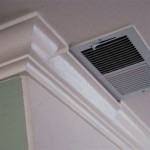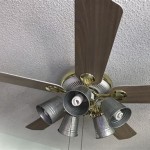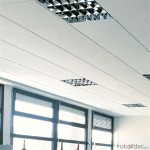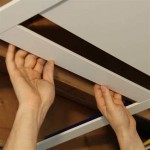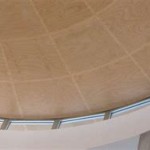How To Convert A Ceiling Fan Remote Control
Converting a ceiling fan to remote control operation offers increased convenience and accessibility. This process typically involves replacing the existing wall switch with a receiver unit and pairing it with a handheld remote. While the specific steps may vary slightly depending on the brand and model, the general principles remain consistent.
Key Considerations Before Starting
Several factors should be considered before undertaking a ceiling fan remote conversion. Understanding these elements will help ensure a smooth and successful installation.
*
Fan Compatibility:
Not all ceiling fans are designed for remote control operation. Check the fan's documentation or manufacturer's website to confirm compatibility. Some older fans may require additional wiring modifications or may not be compatible at all. *Remote Control Features:
Remote controls offer various features, including fan speed control, light dimming, and timer functions. Consider desired functionalities when selecting a remote control kit. *Receiver Unit Placement:
The receiver unit needs to be housed within the fan's canopy. Ensure there's enough space to accommodate the receiver alongside the existing wiring. *Electrical Safety:
Working with electrical wiring requires caution. If uncomfortable working with electricity, it is recommended to consult a qualified electrician.Tools and Materials Needed
Gathering the necessary tools and materials beforehand streamlines the conversion process.
*
Ceiling Fan Remote Control Kit:
This kit includes the remote and the receiver unit. *Screwdrivers:
A variety of screwdrivers, including Phillips and flathead, may be needed. *Wire Strippers/Cutters:
These tools are essential for preparing the wiring connections. *Electrical Tape:
Used for securing and insulating wire connections. *Ladder:
A sturdy ladder is necessary for safe access to the ceiling fan. *Wire Nuts:
Used to connect wires securely.Turning Off the Power
Safety is paramount when working with electrical circuits. Disconnecting power prevents electrical shock.
*
Locate the Circuit Breaker:
Identify the correct circuit breaker that controls the ceiling fan. *Switch Off the Breaker:
Turn the circuit breaker to the "off" position. *Double-Check Power Disconnection:
Use a non-contact voltage tester to ensure the power is completely off at the fan's wiring.Removing the Existing Wall Switch
The existing wall switch needs to be removed to make way for the receiver unit.
*
Remove the Wall Plate:
Unscrew the wall plate covering the switch. *Disconnect the Wires:
Carefully disconnect the wires from the existing switch, noting their positions and connections. Take photos for reference. *Remove the Switch:
Remove the switch from the electrical box.Installing the Receiver Unit
The receiver unit is the core component of the remote control system.
*
Connecting the Wires:
Following the instructions provided with the remote control kit, connect the wires from the fan and the power source to the receiver unit. Ensure proper wire nut usage for secure connections. *Mounting the Receiver:
Securely position the receiver unit inside the fan's canopy. Ensure it doesn't interfere with the fan's operation.Connecting the Fan to the Receiver
Properly connecting the fan to the receiver is crucial for the remote control to function correctly.
*
Identifying Fan Wires:
Locate the fan's wires, typically labeled for motor and light functions. *Connecting to the Receiver:
Connect the fan wires to the corresponding terminals on the receiver unit, following the provided wiring diagram.Installing the Remote’s Wall Cradle (Optional)
Many remote kits include a wall cradle for convenient storage of the remote.
*
Connecting Wires (if applicable):
Some cradles require a neutral wire connection. Follow the kit instructions for wiring. Most are simply mounted to wall. *Mounting the Cradle:
Attach the cradle to the wall using screws.Testing the Remote Control
Once the installation is complete, it's essential to test the functionality of the remote control.
*
Restore Power:
Turn the circuit breaker back on to restore power to the fan. *Test Functionality:
Test all the functions of the remote control, including fan speed control, light operation, and any additional features.Final Checks and Adjustments
After confirming the remote's operation, perform final checks to ensure everything is in order.
*
Secure Wiring and Components:
Double-check all wire connections and ensure they are secure and properly insulated. *Reinstall Fan Canopy:
Reattach the fan's canopy, ensuring it's securely fastened. *Install Wall Plate (Optional):
If a wall plate is used with the remote cradle, install it over the cradle and wiring. If not using a cradle and opting to leave wall switch access disabled, install a blank wall plate.
How To Change A Ceiling Fan Remote Control

How To Wire A Ceiling Fan With Remote Receiver

How To Convert Your Fans Smart 11 Steps With Pictures

How To Install A Ceiling Fan Remote Diy Family Handyman

How To Change The Frequency On A Ceiling Fan Remote Part 1

How To Install A Ceiling Fan Remote Diy Family Handyman

How To Convert A Ceiling Fan Fully Remote Controlled

How To Change The Frequency On A Ceiling Fan Remote

Converting An Existing Ceiling Fan To A Remote Control

How To Install A Ceiling Fan Remote Diy Family Handyman
Related Posts

